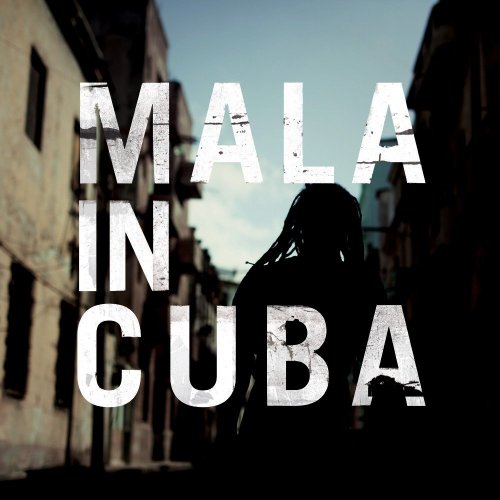
Mala
Mala in Cuba
Release Date: Sep 11, 2012
Genre(s): Electronic, Garage, Club/Dance, Dubstep
Record label: Brownswood
Music Critic Score
How the Music Critic Score works
Album Review: Mala in Cuba by Mala
Great, Based on 8 Critics
Based on rating 8/10
In the same way that the genre "techno" is applied to both the tasteful Derrick May and the garish Scooter, the term "dubstep" had been divided into two camps once the "mall kids" and "punters" got hip. Love it or loathe it, that glitzy "wub wub wub" sound championed by Skrillex and such is a far cry from the texture-rich music of Burial, Benga, and Digital Mystikz, that last name being the South London duo with whom producer Mala broke through. Purists will argue that the Skrillex crowd is so far from the spirit of the original dub reggae that they should abandon that part of the term, and as such, Mala in Cuba was announced as "an intention of realigning dubstep with soundsystem culture,” which it does, splendidly.
Based on rating 4.0/5
It's here! Mala has made a new record. The largest single statement of his career, in fact—a distant first ahead of 2010's six-track mini album Return II Space. It's no normal album, either—rather, a collaboration with a host of Cuban musicians which took place across two visits to Havana, orchestrated by Gilles Peterson and released through his Brownswood label.
Based on rating 4/5
For far too many reasons to discuss here, dubstep is currently taken about as seriously as Jedward reading Faust to some pantomime dogs. Luckily, ‘Mala In Cuba’ isn’t about dubstep, even though it’s by one of the genre’s greatest. He may have ventured to the Carribean to soak up the culture and spar with local musicians, but Mala’s talent for rich grooves – in tracks like ‘Introduction’ and ‘Calle F’, as well as his trademark doom dub in ‘The Tunnel’ – makes one thing very clear: Cuba is just another tool for Mala, an outlet for his name-making style, which remains instantly recognisable and consistently listenable throughout.
Based on rating 6.6/10
"I was totally out of my element, but you have to do these things in life to change and grow, to learn about yourself and to learn about other people as well... I don't know if I can even work with these [Cuban musicians] because they're on a totally different level musically, and I feel so inferior, but then you play them something of yours, and it's not that they feel the same exactly, but they don't know how you created what you created. So you're both in an unknown, so to speak."—Mala, to FACT, on the origin of his debut LP.
Based on rating 3.0/5
Review Summary: Mala's first release as a transient for Gilles Peterson might not be lacking in ideas and passion, but unlike its motive its execution is, at times, a little questionableLike a welcoming dignitary on strange lands does Mala In Cuba begin in greeting, a beacon of hospitable gesturing that serves as the ushering in behind the velvet rope into London's very own Buena Vista Social Club. A tourist, like one and all, its friendly invitation is as much for the artist as it is the listening audience, attentively held and captivated by an album that serves as as love letter to a city that has unknowingly given so much to one tourist in particular. And like a souvenir has the flavor, the very essence of the city been smuggled across the waters back to home base, the heatstroke-inducing sun now robbed of its power as it finds itself surrounded and snuffed out by the fog and litany of horns and voices.
Opinion: Excellent
London producer wraps Cuban motifs around monolithic bass, with great results. Paul Clarke 2012 In 2011, London dubstep producer Mala travelled to Havana at the behest of Gilles Peterson to collaborate with Cuban musicians. That might sound like a recipe for "Buena Vista Social Club remixed by Benga" – but even if the reality weren’t so different, you’d at least have to credit Mala with more daring than just calling Dizzee Rascal for some vocals, as certain contemporaries might.
Opinion: Excellent
To listen to Mala In Cuba with the knowledge that it's the product of one of the godfathers of dubstep is to realize how the genre has changed in the last ten years. The product of a life-changing journey to Cuba, in conjunction with Gilles Peterson's Havana Cultura project, this contains no wobbly bass or centrifugal breakdowns. It is the best electronic extrapolation of the beauty and subtlety of one of the world's great rhythm nations since Bill Laswell's Imaginary Cuba almost 15 years ago.
Opinion: Very Good
Dubstep has now reached such sheer critical mass that even the mad old lady who goes up to you in Greggs has taken to donning a Skrill-cut and a 'WOB WOB WOB' t-shirt. But while the rest of us send flowers and quietly discuss inheritance plans, there's still one place the genre has yet to spread before it truly pops its clogs - the adult listening market. While the teenage mainstream goes big-drop bonkers, it's the fifty-quid man who remains strangely impervious to dubstep's irrepressible force.

